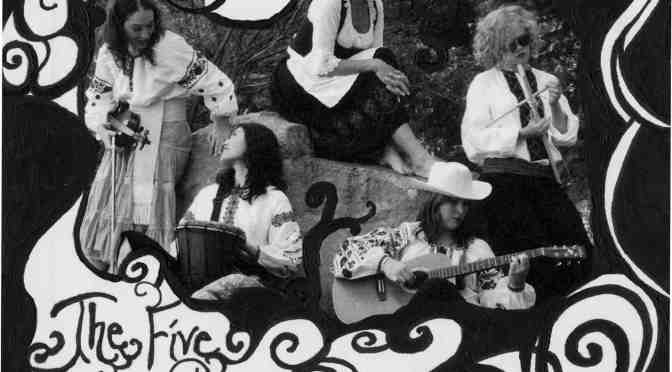If you’ve found this page you might be interested in find out more about The Five Muses. What follows are the tech specs and some information on the production plus an additional write up about the film. If you would like to screen The Five Muses, please get in touch through email:
stevensirski [at] gmail [dot] com
Written and Directed by Steven Sirski
Production Company: Steven Sirski Productions
Running time: 10:08
Genre: Fiction
Format: 16 mm B/W
Completed: February 2010
Tag Line
Inspired by the music of Zradystan.
Synopsis – Short
Deep in the woods of Zradystan, five musical mistresses challenge each other to entice a young wood chopper to become a musician.
Synopsis – Long
A young man is alone in the woods, chopping wood, unaware that he is being watched at a distance by the Five Muses. The Muses challenge each other to see who can entice the young man to become a musician. Resisting at first, soon he succumbs to the musical charms of the Muses. Once he has joined the Muses in playing music, he finds out how much more enjoyable it is to play their music than to resist it.
Production Notes
“A Multi-lingual Script”
The script was originally written in English but the dialogue was translated into 5 other languages: Latin, Ukrainian, Polish, Philipino and German. I translated Rob’s dialogue (Wood Chopper) into Latin, while the other cast members each translated their lines into their respective language. Each cast member is fluent in the language used by their character, except for Rob! The idea to translate the characters’ lines into different languages came from the Director’s desire to show that no matter what language one speaks, everyone understands the language of music.
“Soundtrack”
The soundtrack is made in the style of an old radio broadcast of a traditional Ukrainian hopak, a celebratory dance that usually accompanies dance groups as they display their dancing talents. The musicians who played on the soundtrack were different from those in the film. I have performed with most of the musicians I invited to participate in the making of the soundtrack. Katrusia Basarab and Taras Babiak were both members of the Taran Musical Ensemble, a group that which garnered considerable attention in the Ukrainian community between 2002 and 2007. Sophia Bilozor and I have known each other for a long time through the Ukrainian music community. Lastly, Steve Baria and I were both members of Ciaira’s tears, a Winnipeg-based indie rock band, active between 1999 and 2005.
“Traditional Clothing”
The clothing was an important element in the production since it would give the Muses an “other-worldly” look and appeal. The clothing worn by the Muses were traditional embroidered blouses. Dianna (Euaida/Singer), Kristen (Kitharoida/Guitar) and Ashley (Tessarachorda/Violin) supplied their own costumes, while Andrea (Rhupo-aggeia/Muckbucket) and Mary (Polutumpana/drums) used Ukrainian shirts provided by the Director. All of the Muses’ costumes are traditional outfits that reflect both the cultural background of the actresses themselves and the character they portray on screen. Many of the cast members had previously participated in cultural dance groups that required the use of blouses with such elaborate embroidery. It is said that the embroidery on each blouse has a special meaning to each culture.
“Cinematography”
The look of the film was geared toward the old-style of movie-making when the film makers had only the camera and some film stock and used available light. Shot on location using available light on a mainly overcast day, Josh and I used an old Keystone Criterion 16mm camera with a fixed lens. The film stock we used was black and white Kodak 7222. The in-camera effect of distortion during the drummer muse’s solo was achieved by loosening the gate in the camera and running the film stock through the camera at 24 fps. Minor colour correction was done by the transfer and processing house in Toronto, and then transferred to DVCAM for off-line editing and finishing to DVD and digital file formats.
Production Stills
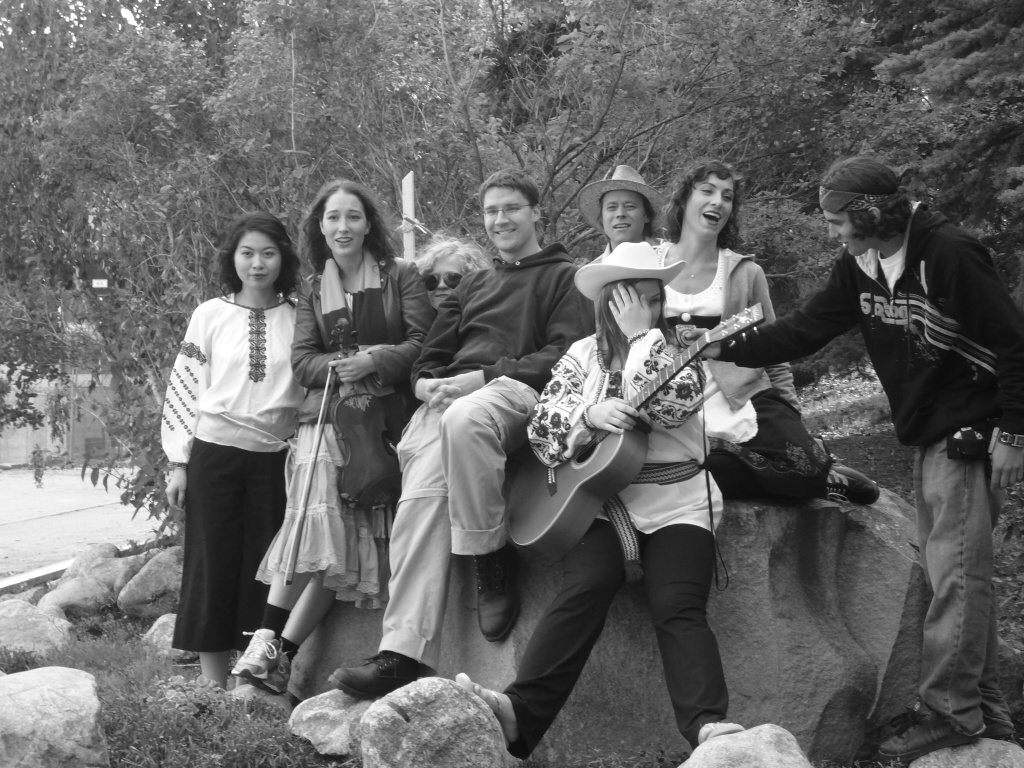
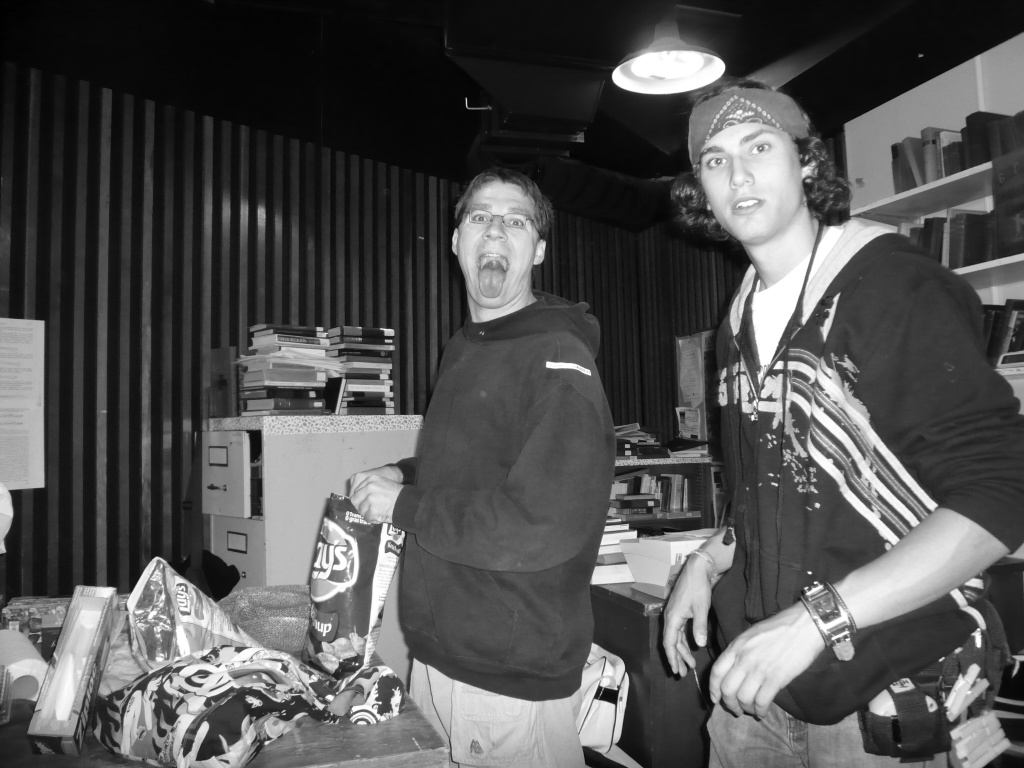
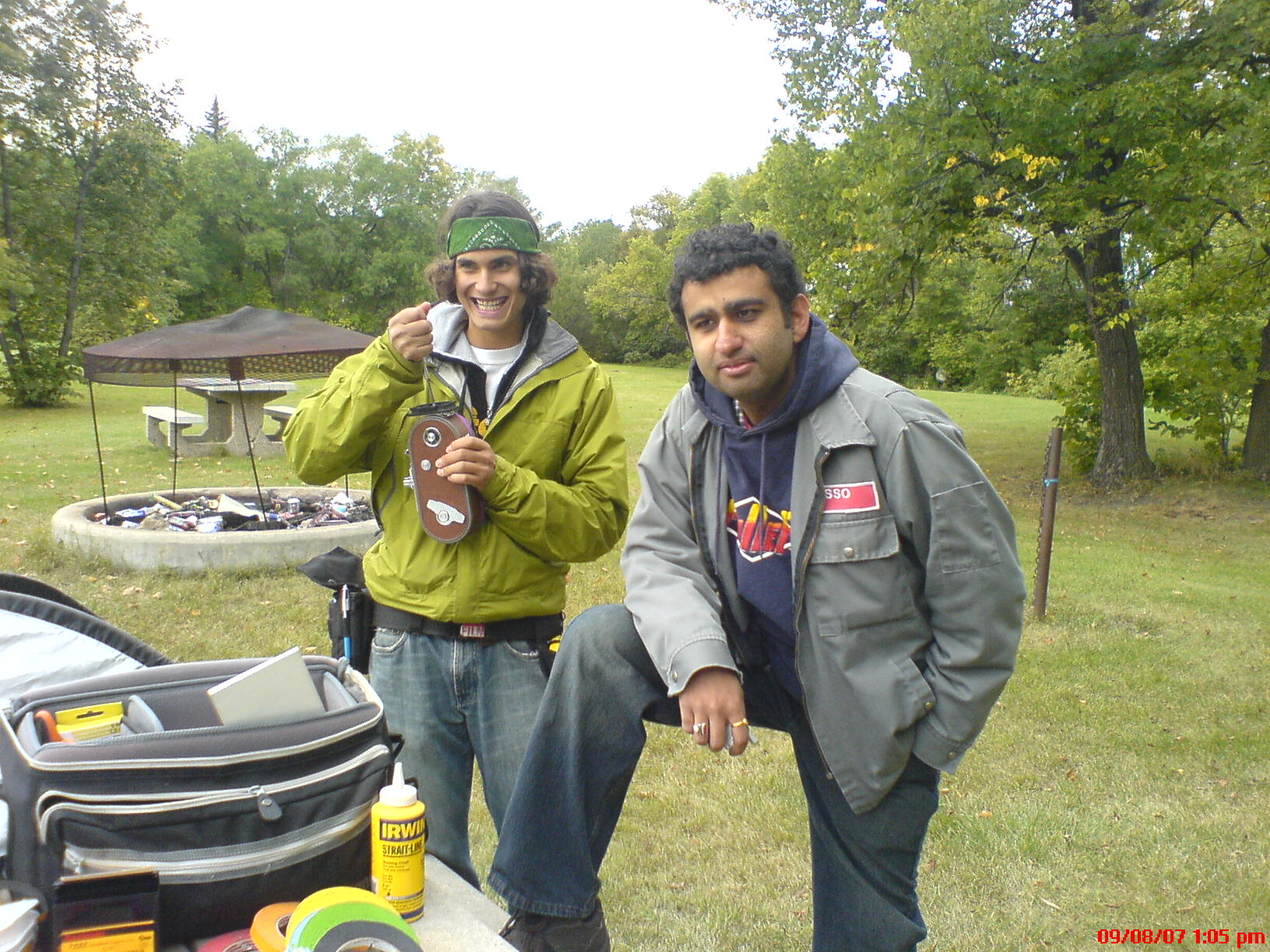
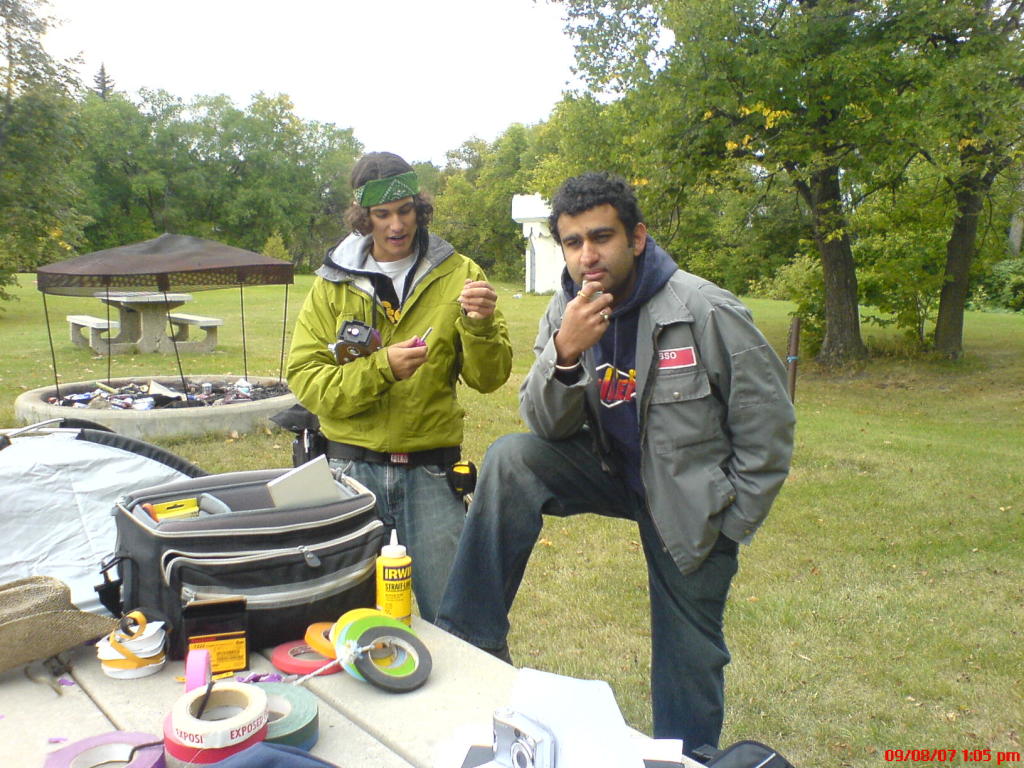
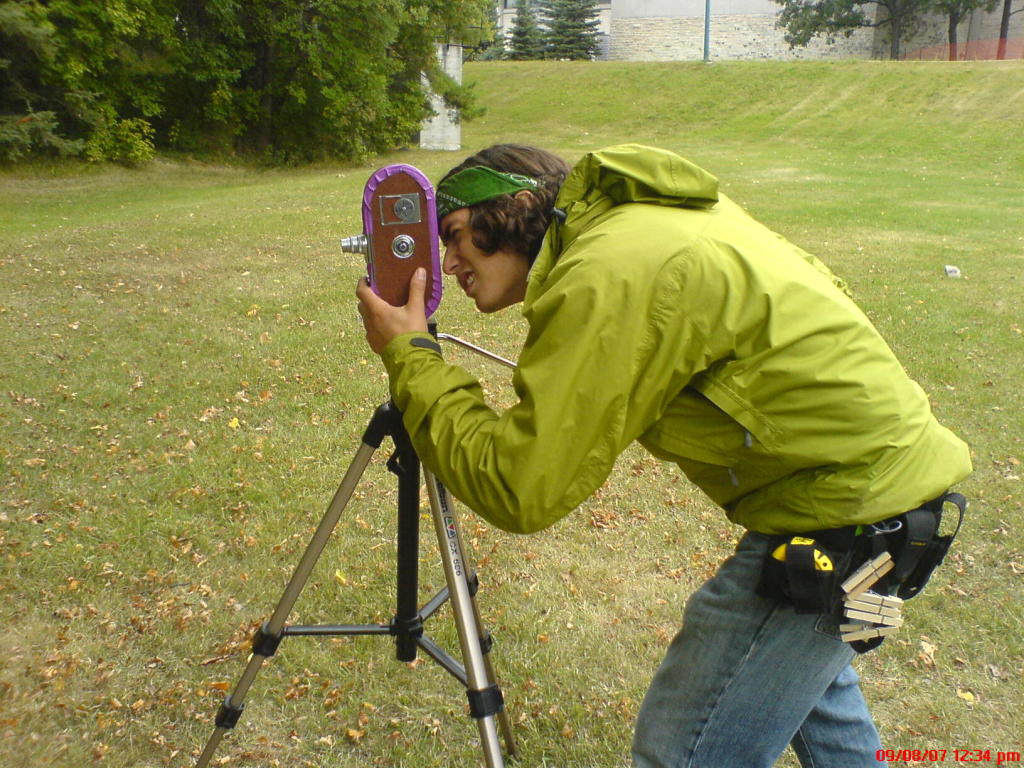
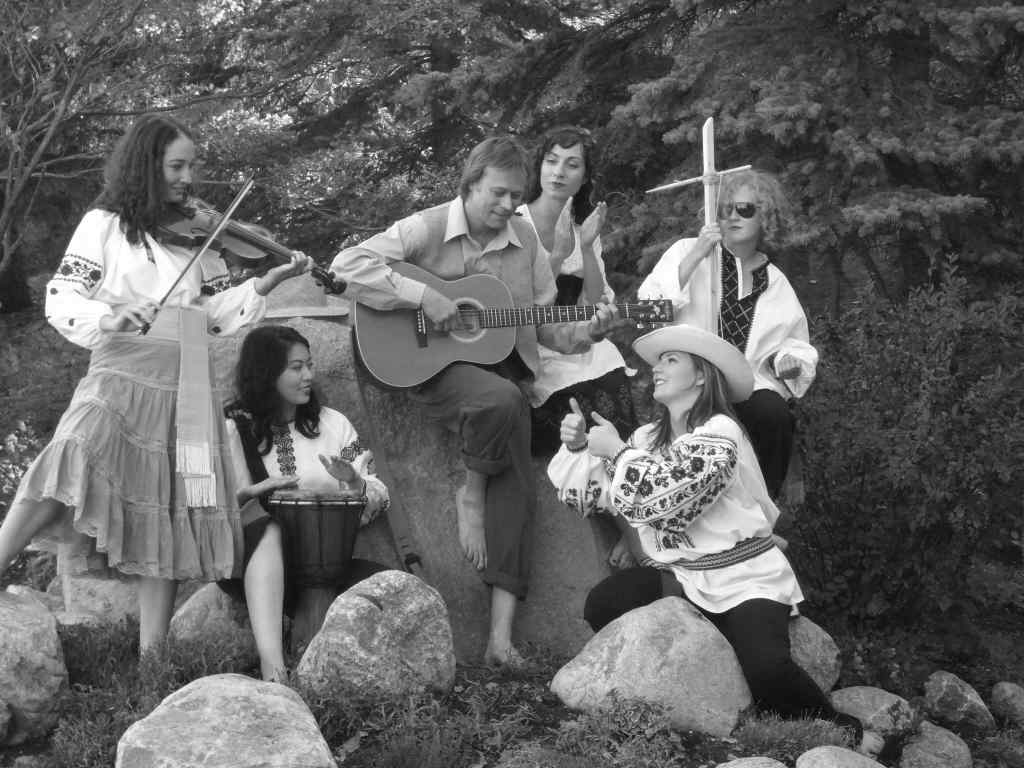
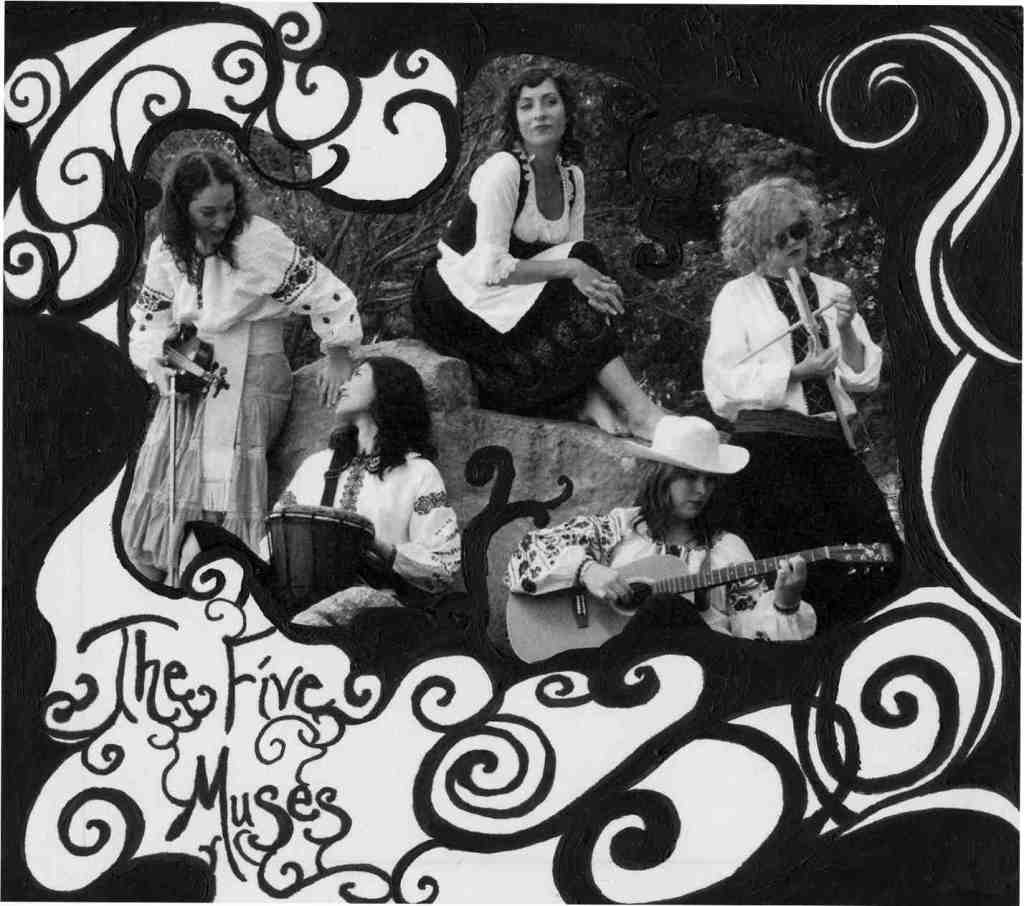
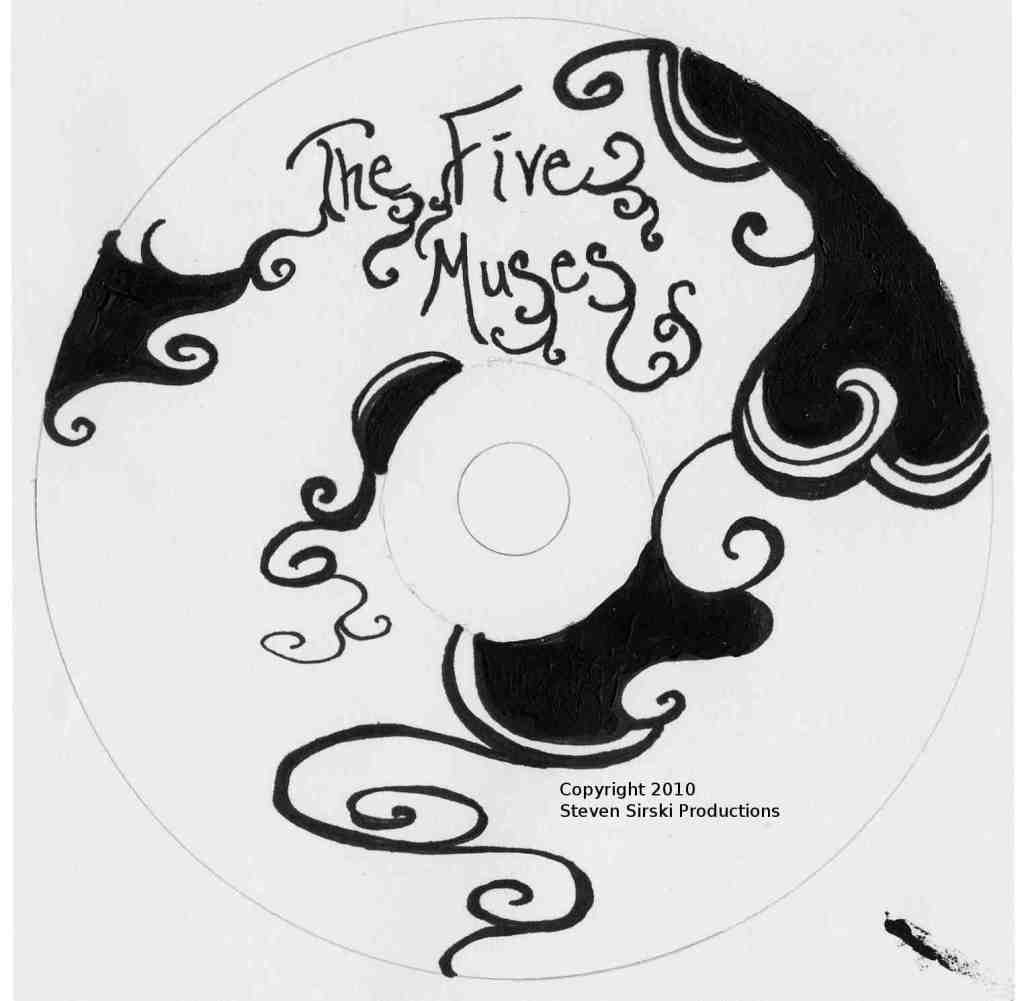
Director’s Statement
(Taken from the liner notes of the DVD)
My inspiration for writing The Five Muses came mostly from the myths and music from Ukraine and ancient Greece. I made this film while attending the University of Manitoba as a graduate student in Classics (the study of ancient Greece and Italy). My thesis topic, The Musical Revolution in Fifth-Century Greece, put me in close contact with several of the key inspirations of the film. Further, for the last few years I have been playing drums with Ukrainian bands which put me in touch with Ukrainian myths and music.
The first inspiration comes from the myths and music from ancient Greece. The five muses are drawn from the nine Muses of Greek myth, each named after their respective craft be it singing, dancing, playing music or other. All of the Greek Muses were female, and so I made my Muses female. I was also inspired to name the characters through a combination of ancient Greek words, e.g. “Euaida” means “good singer,” “Kitharoida” means “guitar singer.” The use of music to enchant someone is also taken from my study of ancient Greece. In particular, the ancient Greeks had studied music with a view to determining its power and its effect on the human soul, especially the moral and ethical aspects, which modern scholars call the “concept of musical ethos.”
The second inspiration is found in Ukrainian myths and music. In Ukrainian myth, there is a story of a musical competition in which three musicians vie for the attention of a beautiful young woman. Each musician tries to attract the young woman by playing for her: one plays drums, another the guitar, and the last the sopilka (a Ukrainian wind instrument, much like the modern recorder). Lastly, modern Ukrainian music played a large role in the development of the story. I chose the number five to represent the number of members in the band I was playing in at the time, Zrada Cultural Academy. We wrote a song called Natasha that has an exciting violin melody that always brought to mind old, silent-era films. I wanted to make the film look as if it was made in the early days of cinema. For that effect, Josh (cinematographer) and I to used a Keystone Criterion 16mm camera and black and white film stock.
And so with the inspirations from the myths and music from Ukraine and ancient Greece I wrote this story. I hope you enjoy it!
And if you’ve yet to see the film, you can watch it on my movie gallery page.
